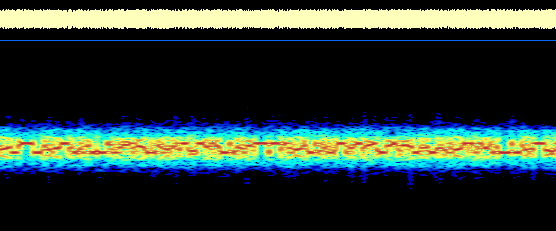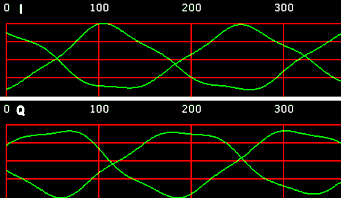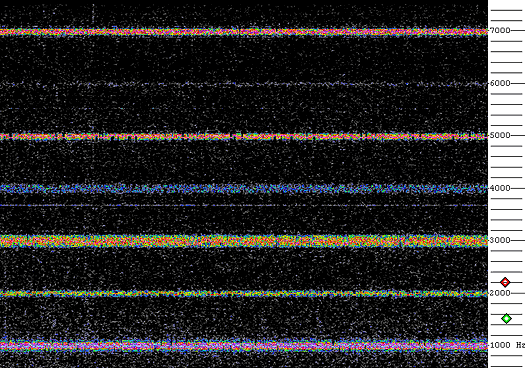DGPS


Differential Global Positioning System compares the known position of a terrestrial radiobeacon with the constantly changing positions of the satellite constellation. The beacons broadcast a binary stream which decodes into continuously updating correction messages plus occasional other useful data sets. All this greatly improves the accuracy of civilian GPS receivers. Hundreds of these beacons are presently coming on-air in the band between 285 and 325 kHz.
The spectrum at top shows several distinctive characteristics of the modulation system used. It's Minimum Shift Keying, a form of continuous-phase frequency-shift keying with parameters carefully chosen to achieve great spectral efficiency approaching theoretical optimum:
The presence of quadrature phase modulation in MSK signals, along with the characteristics described above, gives DGPS beacons an unusually clear "eye pattern" when scanned by a scope at the baud rate:

(This was made from a received signal, hence the lumpiness. As signal degrades, the "eyes" tend to close up.)
The last spectrogram, made with the receiver passband opened all the way up instead of closed all the way down, shows the total lack of adjacent-channel interference with 1-kHz spacing. We also see why this is a good thing. At this late hour of the night, nearly every channel will have a signal in the United States. 300 kHz is a great DX band!

First image made with Gram.exe; second with SkySweeper; last with Spectrum Lab.